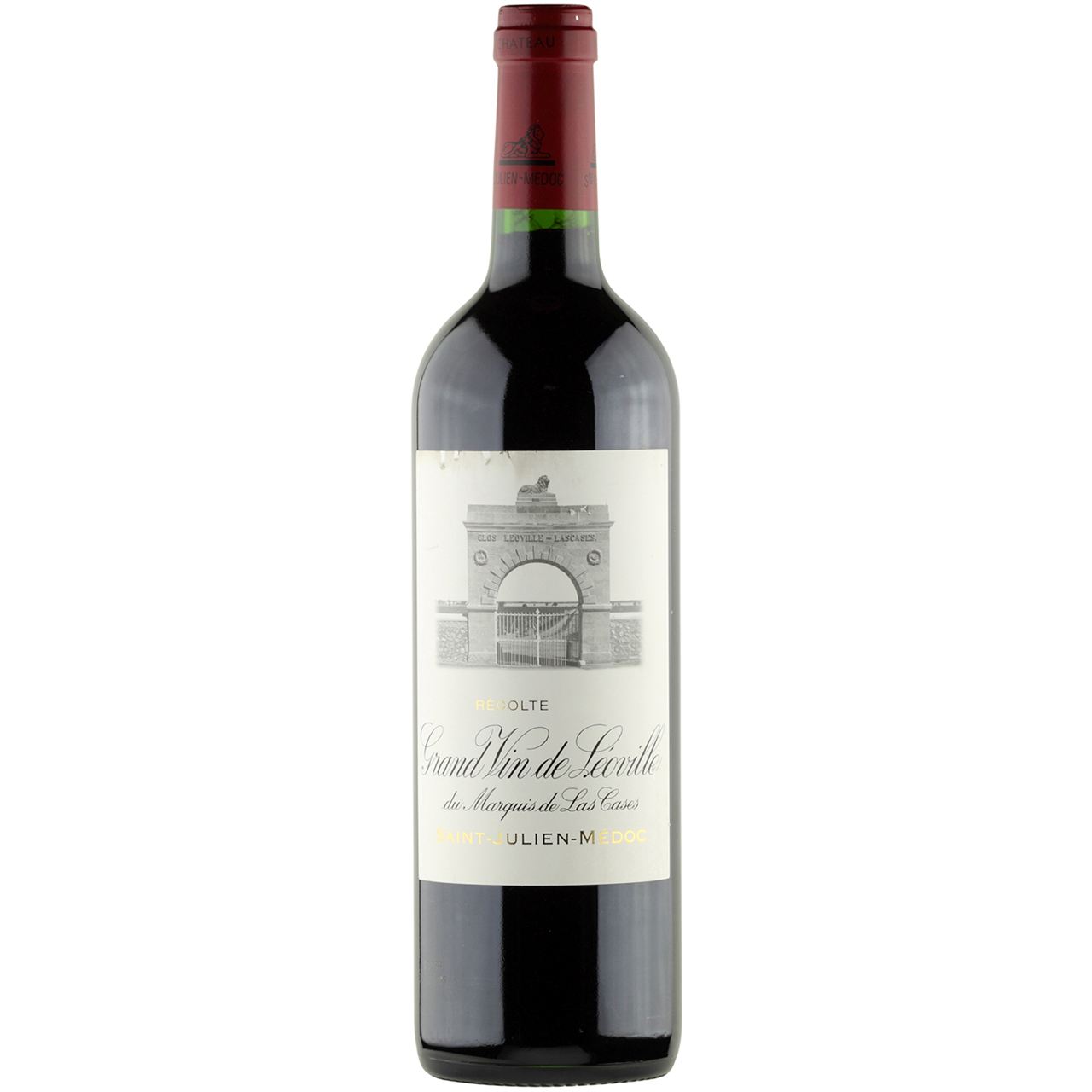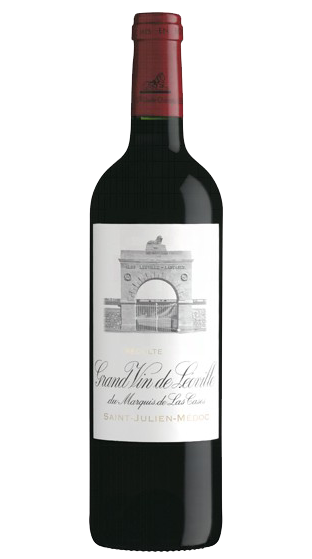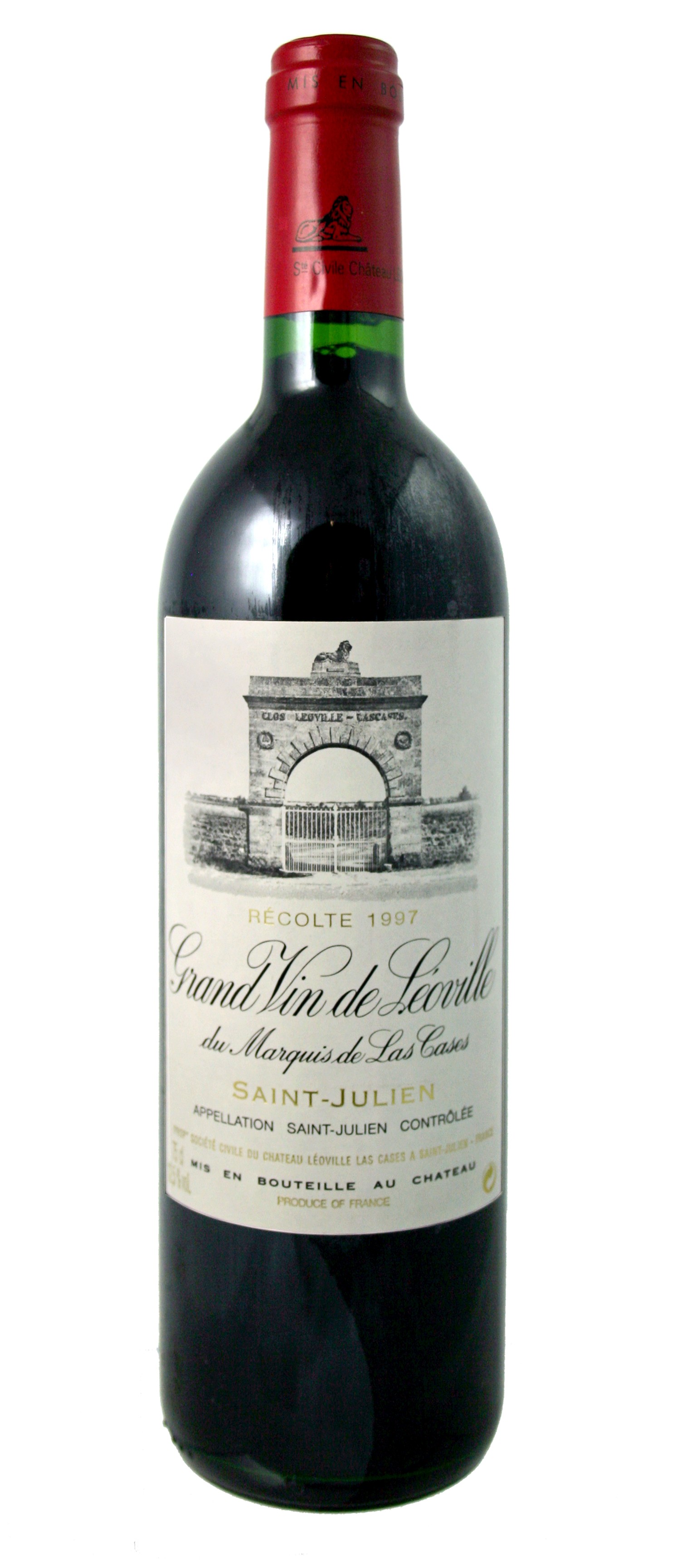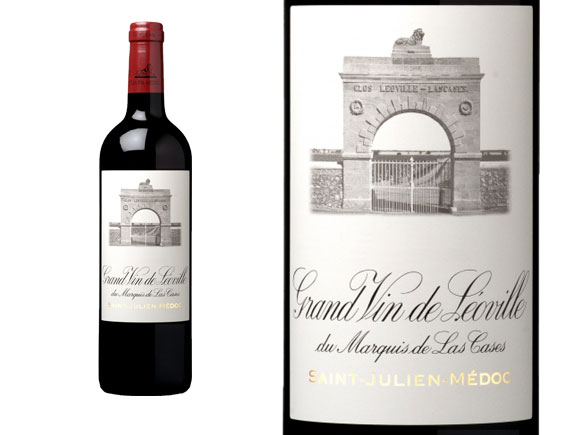Château Léoville-Las Cases
The Chateau Leoville -las- Cases is one of the most famous wineries of Bordeaux. Since 1855, the winery 's second highest level of classification is classified as " Deuxième " Grand Cru Classe, ( please refer to the article Bordeaux wine (classification) ).
Location
It is located in Saint -Julien, Pauillac in close proximity to the city and to the more famous neighbor Château Latour, on the " Route du Vin ", the department of road No.2.
Wines
Striking is the largest of several vineyards of Las Cases: one of the very few in Bordeaux, it is a Clos, fully surrounded by walls vineyard. On the archway to the garden is the great eponymous stone lion, which also adorns the label of the wine. The second wine of the estate is called " Clos du Marquis ": Weingarten of the prince. Even the second wine of Las Cases has often the quality of a Grand Cru.
The vines cover an area of 97 hectares, the estate is thus very large. The areas to share with 65 % Cabernet Sauvignon, 19 % Merlot, 13 % Cabernet Franc and 3% Petit Verdot with. The vines are 30 years old on average. Of the wines go only the best 40% in the Grand Vin; the larger proportion goes into the second wine. Together in normal years, about 450,000 bottles of wine are filled.
The best wines ever created so far are the. The 1986 wine is considered by the internationally acclaimed wine critic Robert Parker 100 Parker points as the perfect wine from vintages 1982, 1986, 1990, 1996, 2000 and 2005. A bottle of this vintage is rarely below 300 euros to buy (as of 2013). The 1982 wine has long been also evaluated with 100 Parker points, but downgraded in June 2009 to 95 points.
Chateau Leoville -las- Cases will be accompanied and advised by the oenologist Jacques Boissenot and his son Eric.
History and Perspective
The vineyards of the Château are part of the once great estate of Leoville: early 17th century included the lands along the Gironde to Seigneurie de Lamarque, and it was a credit to the Dutch to have drained the wetlands along the river. On an early drained area on an elevated gravel knoll 1638 first land were created in the year. From the second half of the 17th century, the family de Moytié put on first vineyards. Later, the gravel knoll was named Mont Moytié. In 1707 the politician and President of the Parliament of Bordeaux, took over the property and bequeathed him later to his two daughters. One of the women married the influential Blaise Antoine Alexandre de Gasq, Seigneur of Leoville and also a member of the Parliament of Bordeaux. After a Erbstreiterei the daughters Moytiés succeeded de Gasq to unite the separate possessions again. The areas ranged from Château Beychevelle in the south up to Château Latour in Pauillac in the north.
De Gasq died childless in 1769, and the Leoville - owned went to the Erbgemeinschaft four nephews, chaired by the Marquis de Las Cases Beauvoir. Was administered the property nor by Jean -Pierre d' Abbadie and by Bernard and Jean -Joseph d' Alozier. During the turmoil of the French Revolution, the Marquis had to flee the country. He succeeded, however, losing his possessions not as common ( Bien national). He separated only by one fourth of the land which was later shaped by Hugh Barton at Chateau Leoville - Barton.
The son of the Marquis of Pierre -Jean de Las Cases, Maréchal de camp led the fate of the remaining manor from 1815. In 1840 the property was, however, further divided as part of the success. While Pierre -Jean kept nearly two-thirds, the other third of his sister Jeanne de Las -Cases has been transferred. Through the marriage of Jeanne with Jean -Marie de Poyferré the name of Chateau Leoville - Poyferré arose.
Las Cases is the largest of them, and also produces the best wine. The estate is owned by the Delon family.
If the classification of the Bordeaux Grand Crus after 1973, the scale-up of Mouton -Rothschild to Premier Cru, should be reopened ever again so Leoville -las- Cases will go as the next premier candidate through the finish line, in all probability.
Trivia
In the film, a beef with the actor Louis de Funès embodies the restaurant critic Charles Duchemin. Duchemin seen in the movie one Chateau Leoville -las- Cases of the vintage 1953 alone by the visual aspects of the wine in the glass. Before the gourmet had lost his sense of taste.










